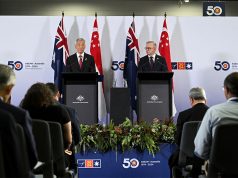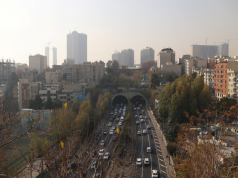SINGAPORE — Southeast Asian demand for oil will keep growing until at least 2040 as emerging nations there rely on the fossil fuel to transport their rapidly growing populations by road, the International Energy Agency said on Tuesday.
Oil usage in the region will expand to around 6.6 million barrels per day by 2040 from 4.7 million bpd now, with the number of road vehicles increasing by two-thirds to around 62 million, the agency said in a report launched at the Singapore International Energy Week. It did not make any forecasts beyond 2040.
A global push to replace combustible engines in vehicles with electric-powered ones to fight climate change has raised concerns in the oil industry that international oil demand could peak in the next 10-20 years.
But the IEA expects oil to continue meeting around 90 percent of transport-related demand in Southeast Asia.
“In 2040, there are about 4 million electric cars in a total passenger vehicle stock of 62 million, but electricity accounts for only 1 percent of transport energy demand,” the IEA said.
Oil, together with coal, will lead growth in Southeast Asia’s power and transport sectors as the region’s energy demand is expected to climb nearly 60 percent by 2040 from now, the agency said.
The largest share of the increase in final energy consumption will be from power generation, with rising incomes in the region sparking more people to buy electric appliances including air conditioners, the IEA said.
Installed power generation capacity in Southeast Asia will rise to more than 565 gigawatts (GW) in 2040, from 240 GW today, it said, with coal and renewables accounting for almost 70 percent of new capacity.
Coal alone will account for almost 40 percent of the growth, overtaking gas in the electricity mix, the IEA said.
Electricity supplied by natural gas-fired plants will rise by 60 percent in absolute terms, but the share of gas in the power mix will drop to 28 percent by 2040 from the current 43 percent, it said.
Southeast Asia will become a key driver for energy demand globally as its economy triples in size and its total population grows by a fifth, the IEA said. But the region’s net energy import bill is also rising as oil production declines, raising concerns over energy security.
Southeast Asia will have to fork out more than $300 billion in 2040 for net energy imports, equivalent to about 4 percent of the region’s total gross domestic product, according to the IEA.
Its net oil imports of 6.9 million barrels per day in 2040 will require $280 billion in annual outlay by 2040, making oil the largest chunk of projected imports, the agency said.
“Apart from the mounting import bill, the region’s increasing dependence on imported energy raises significant energy security concerns,” the IEA said.










